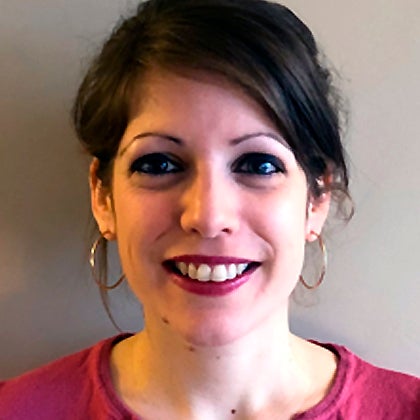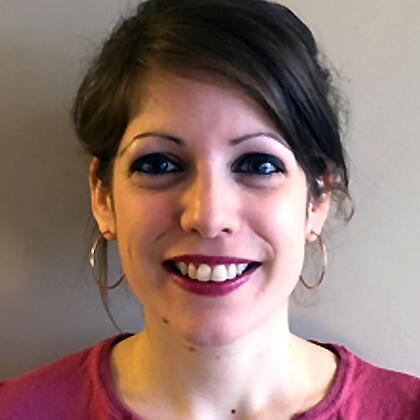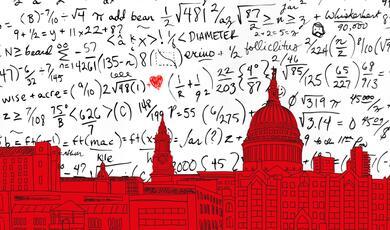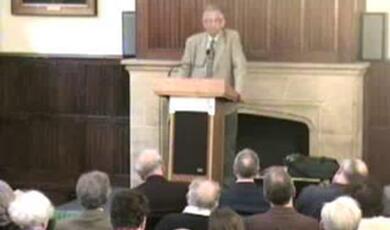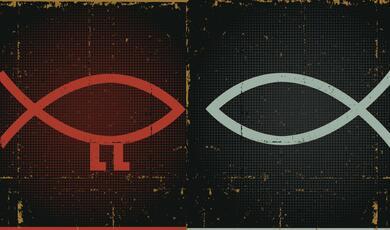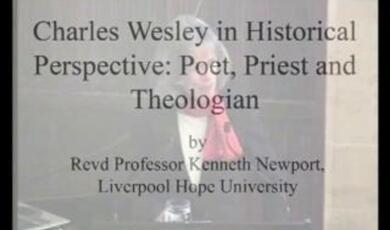Shaping Mathematical Practices of the Science of the Stars
Share
- Details
- Text
- Audio
- Downloads
- Extra Reading
Extant manuscripts, early library catalogues, lists of loans and wills are key witnesses for better understanding the mathematical practices and innovations in different milieux at the end of the Middle Ages. A systematic exploration of those sources allows to delineate ‘communities of learning’, consisting of scholars versed in similar readings and practices. This lecture looks at how astronomical practices have been shaped by those communities at the end of the Middle Ages, through the activity of a group of 14th century Oxonian scholars.
This was the first talk in the 2023 BSHM event, Astronomy and the Forging of Mathematical Communities.
Download Text
Shaping Mathematical Practices of the Science of the Stars: Exchanges and Innovations in Medieval Communities of Learning
Dr Laure Miolo
18 October 2023
Introduction
In the late Middle Ages, producing a written work often involved synthesising various authorities and sources. However, it was not a solitary task, as many works resulted from longstanding exchanges of ideas within networks or groups of acquaintances and friends. Although the publication process was distinct from present-day practices, sharing an initial version of one’s work with a companion or a disciple represented one of the primary stages of publication before creating a presentation copy intended for a patron or another recipient.[1] Formal or informal exchanges existed in different disciplines, and astronomy and astrology were not exceptions to this rule. As the following discussion will show, the lack of strict regulation of the study of the science of the stars (astronomy and astrology) in the early medieval universities, especially in Paris and Oxford, probably encouraged the rapid exchange of ideas between different groups of scholars.
Examining the practices of the science of the stars through the lens of ‘communities of learning’, as recently explored and enhanced by Constant Mews,[2] allows for a better understanding of the genesis of a wide range of works and provides insight into the circulation of ideas. As Mews and John Crossley have rightly underlined:
“The transmission of ideas always depends on the existence of networks of communication, and often also of the physical transport of books and manuscripts, for the transmission of ideas between the members of the communities, and indeed between the communities themselves, for communities of learning depend on the continuing development, refinement, and often revision of current ideas. [...] Informal networks of friends could often constitute just as powerful a community of learning as some formal institutions, whether in the twelfth or the fifteenth century.”[3]
The different aspects of this definition may be applied to different groups of scholars found in the universities of Paris and Oxford in the fourteenth century. The study of both groups is made possible by the abundance of surviving manuscripts, often autographs, that circulated in this context. The sources often show that those scholars gathered around comparable astronomical texts and tables. This was facilitated by the shared access to sources through colleges but also through friends. The spread of new texts and practices was thus facilitated by the formation of networks of scholars with similar interests.
Although the existence of those groups is attested for an earlier period, for this paper, I will focus on the fourteenth century and the university context. First, I will examine the official status of the science of the stars in the universities of Paris and Oxford. Then, I will outline the formation of this group of scholars. They came together around various texts and sources of authority. Finally, I will discuss the dissemination of scientific ideas and texts produced in these networks, as well as the specialisations of certain scholars.
1. The Status of the scientia stellarum (science of the stars) in the universities of Paris and Oxford
The practice of the ‘science of the stars’ in the universities of Paris and Oxford is characterised on various levels. Astronomy was formally taught in the faculty of arts along with other mathematical sciences (quadrivium) and natural philosophy. This served as propaedeutic education. However, compared to other disciplines, the teaching and practice of mathematics suffer from a relative marginalisation, as reflected in university statutes. In contrast to natural philosophy, which benefited from a series of regulations governing its teaching following various debates between the Faculty of Arts and the Faculty of Theology, mathematics has ultimately been regulated to a lesser degree by statute. This is probably because the disciplines of the quadrivium had remained outside the disputes based on Aristotelian doctrines. The condemnations of 1270 and 1277 only relate to astral determinism and do not aim at individual texts; instead, they address activities like astrological elections and interrogations.[4] The relative silence of the statutes does not reflect the reality of how astronomical and astrological knowledge was transmitted within the universities of Paris and Oxford. It only attests to a greater autonomy in teaching and practices. The near lack of formal exercises such as disputatio or questio dedicated to the science of the stars demonstrates the independence of this discipline in the academic landscape.
This autonomy did not prevent the creation of educational materials and the standardisation of teaching. For example, Oxford was more detailed than Paris when it prescribed the study of John of Sacrobosco’s De Sphera. Nonetheless, the Corpus Astronomicum was authored in Paris in the 1250s, witnessed in hundreds of manuscripts, and utilized as a guidebook until the close of the fourteenth century.[5] The content of this teaching is better understood when considering the various references to De forma found in particular medieval manuscripts and catalogues.[6]
Less regulated in Paris, the teaching of the scientia stellarum was also less frequent and certainly optional, the collegiate institution facilitated this type of small-group teaching during festivis diebus. Several examples illustrate this practice: in 1340, Sunon of Sweden, a student of Master Conrad de Megenberg and translator of the De Sphera, delivered a lecture on the sphere, potentially based on John of Sacrobosco's De Sphera. In 1358, Robert le Normand sought permission to teach two astrological texts, namely the Pseudo-Ptolemy’s Centiloquium and Ptolemy’s Quadripartitum. It is possible that the college established in 1371 by Master Gervais Chrétien, physician to Charles V, granted two scholarships in 1377 to fund two scholars regis studying ‘licit mathematics’ to regulate semi-private teaching, especially astrological teaching.[7]
These testimonies pertain to the teaching delivered by the Faculty of Arts, which seems to have been restricted to basic texts. Nonetheless, alongside this preparatory instruction, there was more advanced dissemination and practice of astronomy and astrology by experienced masters of arts, who were frequently associated with the higher faculties of theology and medicine. Although there is scarce evidence of this form of lessons, in light of their contents, it can be assumed that they pertain to advanced teaching. In 1320, Master Geoffrey de Meaux of the University of Paris discussed astronomical tables in his treatise Flos Kalendariorum, pointing out the inadequacies of the Alfonsine tables.[8] The same year, Master John Vimond, published a set of tables of which the colophon reads that they were composed ‘for the use of the students of the University of Paris and all others’.[9] There is no evidence of official university teaching in these mentions. However, it appears that this represented a higher level of instruction, where bonds between masters and disciples developed, as well as communities of practitioners of the science of the stars.
2. The science of the stars and its networks
Within the university, the college or collegium constituted a rather autonomous place where statutes regulated the daily life of the community of scholars. In addition to board and lodging and the absence of a university library, colleges provided access to a library comprised of books donated by patrons or former fellows (socii). The collegiate structure cultivated a sense of community, an esprit de corps, and many enduring intellectual connections persisted after leaving the university. There are various clues in texts and colophons that point towards the Collège de Sorbonne as a centre of scientific production. In the fourteenth century, the scientific contents of its library were exceptional and reflected the scientific practices of some of its fellows. Other scholars were inspired to visit the college and to access this library, such as Jean des Murs (fl. 1319–1347) who annotated many scientific manuscripts housed in the Sorbonne.[10] As indicated by the colophons in some of his works, he produced them during his tenure as a host of the college.
A similar context is found at Merton College in Oxford where scholars from the same generation shared a similar interest in astronomical and astrological writings and practices. [11] Their sense of community prompted them to offer reciprocal aid to one another. In his astrological predictions of the conjunctions of Saturn and Jupiter of 1357 and 1365, John Ashenden cites Simon Bredon’s calculation of the eighth sphere that he completed in 1340 (Oxford, Bodleian Library, Digby 176, fol. 45r).[12] This calculation was likely commissioned by John himself. In that same year, Simon also resigned his position as Merton procurator in favour of a dilectus magister, who was none other than John Ashenden, another Mertonian noted for his astrological works. Collaborations endured beyond the stay in College, as evidenced in wills related to former fellows. The communal memory of this group was preserved in written works and manuscripts, and also in certain bequests. Along with books bequeathed to his former College; Simon Bredon, in his will (1368), left a large astrolabe to William Reed.
Beyond a shared environment of activity and living, the defining characteristic of these ‘communities of learning’ is a shared engagement with the science of the stars and with particular texts and tables. In the fourteenth century, there was a partial focus on assimilating a fresh array of tables and parameters. Those tables were originally compiled at the court of Alfonso X of Castile between 1263 and 1272 by two Jewish astronomers, Isaac ben Sid and Judah ben Moses ha-Cohen. It is not known in what form they crossed the Pyrenees, but they were used for the first time in Paris in 1319, although, a marginal annotation from 1304 provides preliminary evidence of its use in France or Italy.[13] The tables were probably brought to Paris without any canons, the texts which usually describe how to use the tables to compute a variety of values such as planetary positions or astronomical phenomena. Therefore, one of the initiatives of the Parisian circle was to familiarise themselves with these materials, to create canons to accompany the tables and to base some of their works on the Alfonsine parameters. The recognition of Alfonso X as an equal authority to Ptolemy appears to have been established in the earliest works employing those parameters. Jean des Murs praised the Alfonsine tables in two of his early works and asserted that he had experimented with them through observations. The first stage of the reception of these parameters and tables was to test their precision. In his Expositio intentionis regis Alfonsii circa tabulas eius, completed in 1321, Jean des Murs provides various empirical proofs to verify particular values, such as the accurate length of the tropical year or the mean motion of the sun. One of his precise observations relates to the measurement, using a large quadrant (kardaga), of the meridian altitude of the sun at the moment of the vernal equinox, which occurred in Évreux in 1319, while Jean was still affiliated with the Faculty of Arts.[14]
As early as 1321, the assembly of a canonical corpus of tables and canons seems to have been undertaken over a short period of time by several Parisian masters with close links: Jean des Murs, John of Lignères, John of Saxony, John of Genoa. The development of this corpus involved the production of model writings based on al-Battanī’s zīj. The Alfonsine tables established a shared foundation for comparable techniques. The manuscripts and texts of these experts reveal several indications of their cooperation, and even their intellectual lineage in some cases. Ideas and works seem to have circulated rapidly within this group. Although the texts offer scarce insight into these connections and collaborations, the personal manuscripts of certain astronomers elucidate these interactions. In his notebook (Escorial, RBMSL, MS O.II.10) where he records observations, computations and drafts, Jean des Murs refers to the work of various of his contemporaries:
- On a blank leaf, Jean des Murs compiles tables detailing the precise hourly movements of the sun and moon. In the heading, he notes that the lunar velocities align with John Vimond’s table of lunar velocities in minutes per day as well as that of John of Saxony.
- Jean discusses a technique for calculating the time of apparent conjunction through lunar parallax in longitude. He makes a comparison between the methods used by John of Saxony and John of Sicile.
- At the end of his calculation of the eclipse of May 1333, Jean inserted a note referring to John of Lignères, who had calculated the equation of time for the Toledo latitude.
These various references are all linked to preparatory calculations that Jean des Murs did not preserve in his works. They testify to a period of learning and the beginnings of certain practices, certainly justified by the absence of original canons accompanying the tables.
Intellectual lineage contributed greatly to the dissemination of works and ideas. When some of these scholars worked together at the same level, informal teaching certainly led to the creation of master-disciple relationships. This lineage is evident in the case of John of Lignères and two of his disciples: John of Saxony and John of Genoa. Although John of Saxony’s canons of 1327 contains numerous references to John of Lignères and his canons of 1322, his status as a disciple is clearly stated in the prologue to his Exempla super tabulas primi mobilis of 1335 based on the John of Lignères’s canons on spherical astronomy. John of Saxony was also probably one of the first to hold John of Lignères’s canons in his hands. This can be deduced from his autograph copy of the canons on the primum mobile and the planetary canons. It is dated 1323, one year after the completion of the canons by John of Lignères. This manuscript also contains works by other members of the circle, such as Jean des Murs, and John Vimond. These texts were all written between 1320 and 1324 when John of Saxony was still a student. This manuscript testifies to the intense activity of this group from the early 1320s and to the early dissemination of their writings among their students.[15]
John of Genoa followed in the footsteps of his master’s astronomical works, which he cited in several of his writings. His dependence on the work of John of Lignères is evident in his Canones eclipsium (Canons of eclipses), which he completed in 1332 when he had just obtained his medical degree. In one of the paragraphs preceding the colophon, John of Genoa justifies his choices and sources. With regard to the method of calculating the duration of the eclipse, John of Genoa advised the reader to rely on al-Battanī and John of Lignères, whose ‘canons are longer than they are difficult’. Both disciples, John of Saxony and John of Genoa made John of Lignères an authority on Parisian Alfonsine astronomy, whose canons serve as a foundation and model.[16]
3. Circulation of texts and specialisation
The dissemination of recently written treatises is an integral aspect of the publishing procedure. The ultimate version of a text is circulated within a group of scholars to benefit from suggestions or advice. These groups served as an optimal forum for the circulation of ideas and first drafts. Nonetheless, obtaining tangible evidence of these preliminary exchanges is extremely infrequent; as most often it is the definitive version of a medieval work which survived in manuscripts to this day. A rare counter-example is a personal list of loans contained in Jean des Murs’s notebook. The document provides an inventory of works that were lent by Jean des Murs to various persons, including a number of Parisian masters. The majority of these loans pertain to compositions by Jean des Murs, including his very own canons to the Alfonsine tables completed in 1339 at the Sorbonne. This list provides evidence of Jean des Murs’ influential network at the University of Paris, as well as in other locations such as the Court of Navarre and the Papal Curia.
The rapid diffusion of contemporary works among a group of scholars or the influence played by key figures is particularly striking when considering the Merton College circle. Simon Bredon, physician and theologian, and William Reed, Bishop of Chichester, bibliophile, seem to have been the key figures in the construction of a community motivated by the study of the science of the stars. A manuscript compiled by William Reed from 1368 to 1385 may be perceived as a portable library of the compositions of his contemporaries. This volume presents a distinctive dossier concerning planetary conjunctions and their associated astrological prognostications. It also highlights the fact that astronomy was often a vehicle for the calculation of astrological charts and the elaboration of predictions.[17]
The manuscript Oxford, Bodleian Library, MS Digby 176 contains one of only two works composed by William Reed: the Almanak Solis, composed in 1337, is not strictly speaking an almanac or ephemerides but rather a list of the daily true positions of the sun given for a four-year cycle, here 1341-1344. The Almanak Solis is derived from the Alfonsine parameters, recently transmitted to England, which were later used by William Reed for his tables based on the Oxford meridian in 1340. The same work may be found copied by the same scribe in another manuscript (Oxford, Bodleian Library, MS Digby 178). This manuscript belonged and was partly copied by Simon Bredon, a friend of William Reed. The Almanak solis was therefore circulated soon after William Reed composed it. It is possible that Simon collaborated with William during this time, as Simon was concurrently working on his commentary of Book III of the Almagest, which focused on the movement of the sun.[18] The link between Simon Bredon and William Reed is also evidenced by the administrative role they played in the College and by the Church benefits they individually obtained in Wingham in Kent and Chichester.
The same manuscript also presents further evidence of the collaboration between William Reed and John Ashenden. It includes William Reed’s initial computations, using his own set of tables for the meridian of Oxford based on the Alfonsine parameters, to support John Ashenden’s prediction of the 1345 triple conjunction. This collaboration emphasises the expertise of both individuals, with one specialising in astronomical calculations and the other in astrological predictions. The English astrologer’s predictions did not depend solely on William Reed’s calculations: at the end of his judgement on the conjunctions of 1357 and 1365, he explicitly mentioned his reliance on Walter Elveden’s calculations for the duration and intensity of the partial lunar eclipse that occurred on 31 July 1357 and its subsequent catastrophic consequences. It seems evident from both mentions that certain scholars possessed expertise in the realm of astronomical computations, while others were more oriented towards the field of astrology.
Conclusion
Although evidence of joint reflection and collective work on a corpus of scientific texts and tables is mostly scattered, examination of personal manuscripts of medieval scholars provides insight into their working methods, scientific practices, and relationships with their contemporaries. In certain circles, there was a real advanced teaching of the science of the stars or rather a transmission of theories and practices. By assimilating the tables that had recently arrived from Spain, astronomers can be observed at work, testing parameters and drawing up canons for using these tables. However, the importance of universities and colleges in cultivating regulated communities and intellectual exchanges cannot be denied in the practice of science. A few years later in Oxford, astronomy and astrology flourished in the Merton circle, partly shaped by the use of the Alfonsine values. Overall, the study of extant manuscripts, documents and medieval libraries provides a unique opportunity to better understand the development of medieval science. It offers unique insights into scientific practices and the circulation of ideas, and how these were shaped by individual interests, networks of practitioners and institutions.
© Dr Laure Miolo 2023
[1] See P. L. Lucas, From Author to Audience. John Palgrave and Medieval Publication (Dublin, 1997), pp. 1–2, 249–280; P. Bourgain, ‘À la recherche des caractères propres aux manuscrits d'auteur médiévaux latins’, Bibliothèque de l'École des chartes, 71 (2013), 185–198.
[2] C. Mews, ‘Communautés de savoirs. École et collèges à Paris au XIIIe siècle’, Revue de Synthèse, 129/6, n.4 (2008), 485–507.
[3] C. Mews and J. N. Crossley, ‘Introduction’, in Communities of Learning: Networks and the Shaping of Intellectual Identity in Europe 110-1500, ed. by C. Mews and J. N. Crossley (Thurnhout, 2011), pp. 1–8 (p. 1).
[4] See J. A. Weisheipl, ‘Curriculum of the Faculty of Arts of Oxford in the early fourteenth century’, Mediaeval Studies, 26 (1964), 143–185; G. Beaujouan, ‘Le quadrivium et la faculté des arts’, in L'enseignement des disciplines à la faculté des arts (Paris et Oxford, XIIIe-XVe siècles), ed. by O. Weijers and G. Holtz (Turnhout, 1997), pp. 185–194.
[5] O. Pedersen, ‘The Corpus astronomicum and the traditions of Medieval Latin Astronomy’, Studia Copernicana, 13 (1975), 57–96.
[6] C. Lafleur, ‘La réglementation ‘curriculaire’ (de forma) dans les introductions à la philosophie et les guides de l’étudiant de la Faculté des arts de Paris au XIIIe siècle : une mise en contexte’, in Weijer and Holtz, 1997, pp. 521-559.
[7] J-P. Boudet, ‘A college of astrology and medicine? Charles V, Gervais Chrétien, and the scientific manuscripts of Maître Gervais’s College’, Studies in History and Philosophy of Biological and Biomedical Sciences 41 (2010), 99–108.
[8] C. P. E. Nothaft, ‘Critical Analysis of The Alfonsine Tables in the Fourteenth Century: The Parisian Expositio Tabularum Alfonsii of 1347’, Journal for the History of Astronomy, 46 (2015), 76–99.
[9] C. Chabás and B. R. Goldstein, ‘Early Alfonsine Astronomy in Paris: the Tables of John Vimond (1320)’, Suhayl 4, 207–294.
[10] L. Miolo, ‘In quest of Jean des Murs’s library: An oveview of his readings and uses of manuscripts’, Erudition and the Republic of Letters, 4 (2019), 13–39.
[11] H. Carey, Courting disaster: Astrology at the English Court and Universities in the late Middle Ages (Houndmills-London, 1992), pp. 58-78.
[12] See also C. P. E. Nothaft, ‘Criticism of trepidation models and advocacy of uniform precession in Medieval Latin astronomy’, Archives for History of Exact Science, 71 (2017), 211–244 (p. 232).
[13] R. Kremer, M. Husson and J. Chabás, Alfonsine Astronomy: The Written Record (Turnhout, 2022); C. P. E. Nothaft, ‘A new series on Alfonsine Astronomy’, Journal for the History of Science, 54:1 (2023), 113–118.
[14] E. Poulle, ‘Jean de Murs et les tables alphonsines’, Archives d'Histoire Doctrinale et Littéraire du Moyen Âge, 47 (1980), 241–271; M. Husson, ‘L’astronomie alphonsine dans l’Expositio intentionis regis Alfonsii circa tabulas ejus de Jean de Murs’, Archives d'Histoire Doctrinale et Littéraire du Moyen Âge, 1:78 (2011), 229–245.
[15] See M. Husson et M-M. Saby, ‘Le manuscrit Erfurt F. 377 et l'astronomie parisienne’, in Les miscellanées scientifiques au Moyen Âge, ed. by A. Paravicini-Bagliani (Florence, 2019), 205–234.
[16] L. Miolo, ‘Retracing the Tradition of John of Genoa’s Opus astronomicum through extant manuscripts’, in R. Kremer et al. 2022, 343‑380.
[17] J-P. Boudet and L. Miolo, ‘Alfonsine Astronomy and Astrology in Fourteenth-century Oxford: The Case of MS Bodleian Library Digby 176’, , in R. Kremer et al. 2022, 57–106.
[18] It is a tempting hypothesis proposed in: K. Snedegar, ‘The Works and Days of Simon Bredon. A Fourteenth-Century Astronomer and Physician’, in Between Demonstration and Imagination: Essays in the History of Science and Philosophy, presented to John D. North, ed. L. Nauta and A. Vanderjagt (Leiden-Boston: Brill, 1999), 285–309.
This event was on Wed, 18 Oct 2023
Support Gresham
Gresham College has offered an outstanding education to the public free of charge for over 400 years. Today, Gresham College plays an important role in fostering a love of learning and a greater understanding of ourselves and the world around us. Your donation will help to widen our reach and to broaden our audience, allowing more people to benefit from a high-quality education from some of the brightest minds.


 Login
Login
